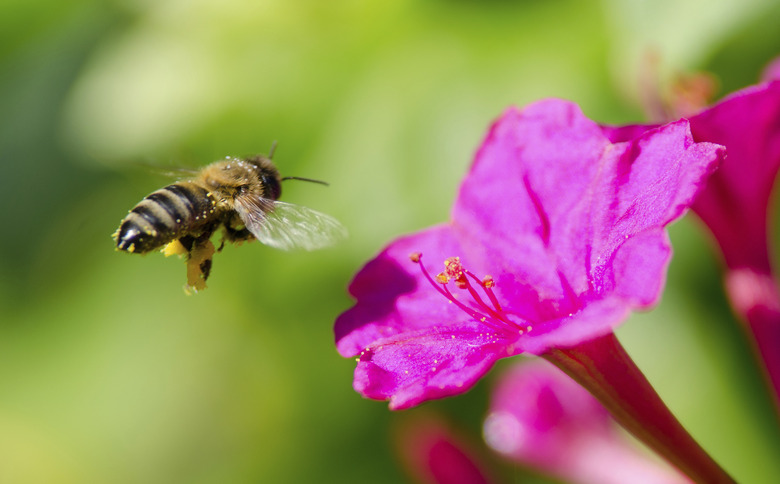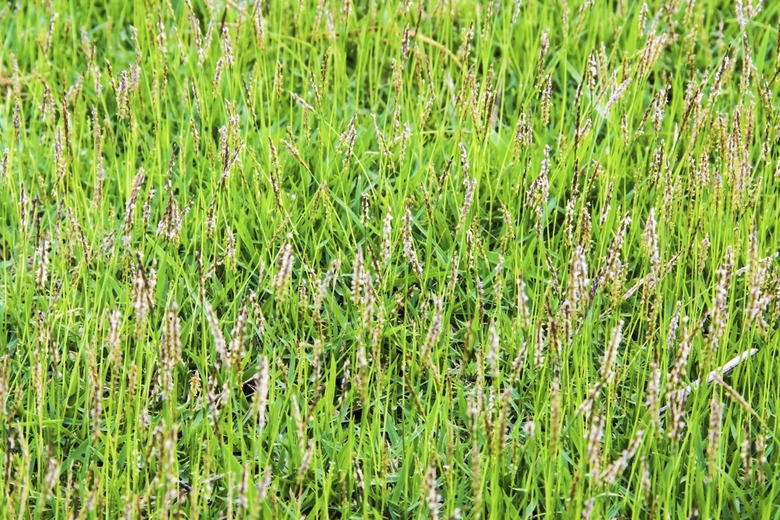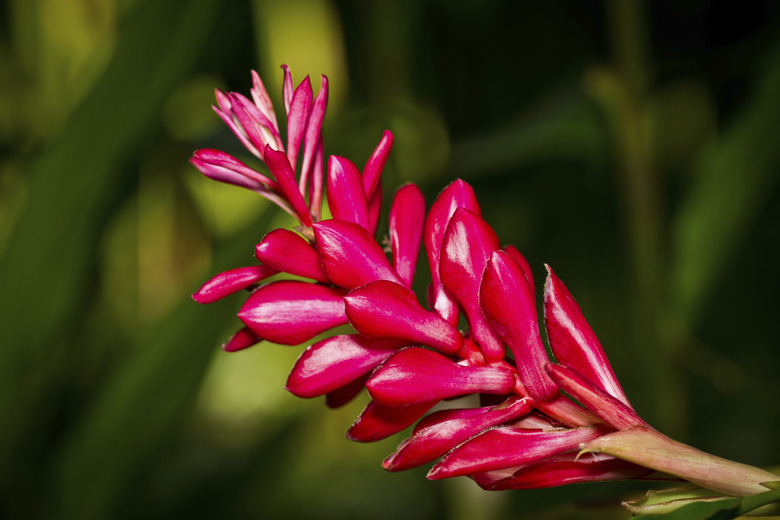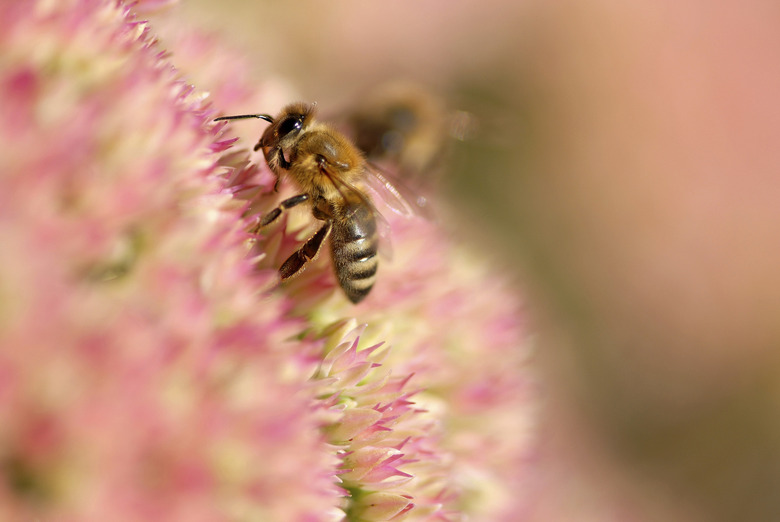Flowers That Don't Attract Bees
To bee or not to bee — that is never the question. Pesticide use has cut the population of these critical pollinators and, as a gardener, you'll want to help their numbers increase. But if you are allergic to bee stings, it makes sense not to attract bees to the family picnic area. Careful flower selection and placement can help you help bees but stay safe.
Making a Bee-Line to Flowers
You admire flowers for eye appeal or fragrance, while bees buzz on over to chow down sugar-rich nectar and nutritious pollen. Bees will flock to blossoms offering ample nectar supplies and readily accessible pollen, and ignore sterile or less generous flowers. Plants that depend on bee pollination lure these insects with bright colors, powerful fragrance and accessible blossom shape. Look for plants without these traits for your bee-free zone.
- To bee or not to bee — that is never the question.
- Pesticide use has cut the population of these critical pollinators and, as a gardener, you'll want to help their numbers increase.
Bee-Ware
Choose plants that have low bee appeal to plant near your home. Grasses and foliage plants can offer rich texture and intricate color contrast without calling bees to the area. Try English ivy (Hedera helix) in U.S. Department of Agriculture plant hardiness zones 4 through 7 or pampas grass (Cortaderia selloana) in USDA zones 8 through 10; both spread so easily that they are considered invasive in some states. If you are set on flowering plants, look for those with modest flowers, scentless blossoms and flower shapes that make it difficult for bees to get nectar. You'll need to select those that do not depend on bees for pollination. Generally, wind-pollinated plants do not attract insect pollinators. In the same way, most winter-blooming and night-blooming plants do not require or attract bees.
- Choose plants that have low bee appeal to plant near your home.
- In the same way, most winter-blooming and night-blooming plants do not require or attract bees.
Guest List
When it comes to drawing up the guest list of plants to invite, take a few tips from the experts. Bee-free gardens are a specialty of Rhode Island landscape designer Louis Raymond and he recommends ginger lily (Hedychium coccineum) with flowers so deep and narrow that only long-nosed insects like moths pollinate the plant. It grows in USDA zones 7 through 10. He also recommends winter-flowering witch hazel (Hamamelis spp.) which grows in USDA zones 5 though 7. Virginia Cooperative Extension advises that bees will stay away from such garden favorites as carnations (Dianthus spp.), which grow in USDA zones 4 through 11 and annual zinnias (Zinnia elegans).
- When it comes to drawing up the guest list of plants to invite, take a few tips from the experts.
- which grow in USDA zones 4 through 11 and annual zinnias (Zinnia elegans).
The Bees' Knees
Another strategy to keep bees at bay near the house is to plant their favorite flowers at the far end of the garden. Install a large grouping of flowering plants native to your area because bees prefer familiar blossoms. Take bloom times into account so your "bee restaurant" keeps the insects' attention year-round, not just in summer. Go heavy on plants that bloom in blue, yellow and red, shades reflecting ultraviolet light, that bees are said to like best. Plant your bee garden in a sunny area with wind protection to ensure the greatest draw. And, of course, avoid pesticides, insecticides and other bee-toxic chemicals in the yard.




